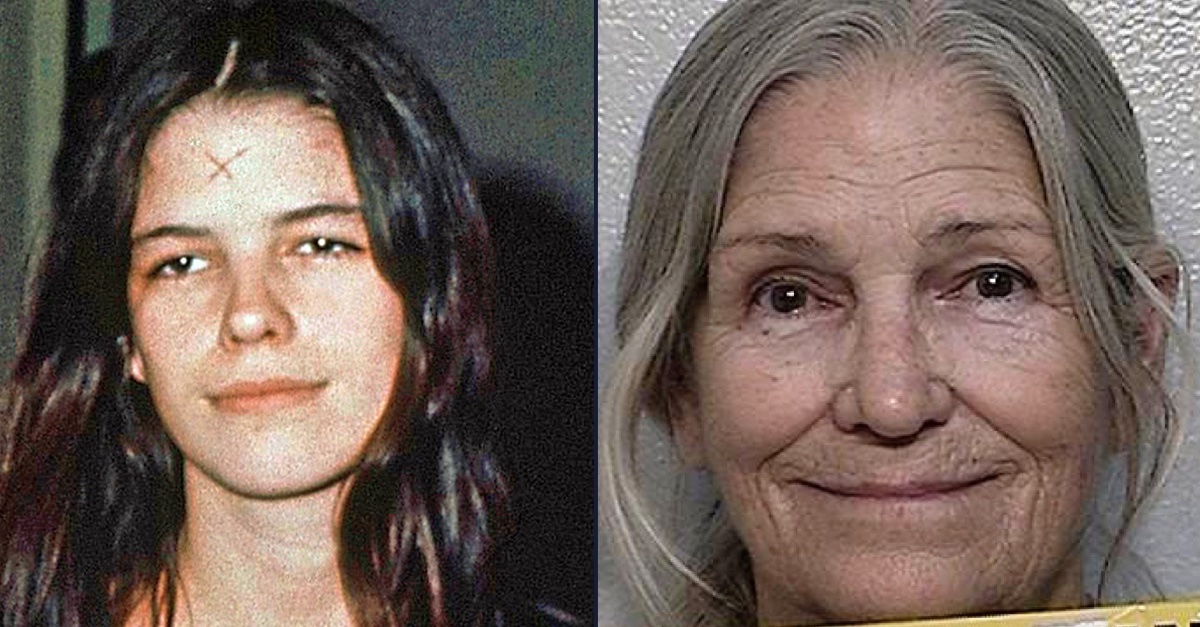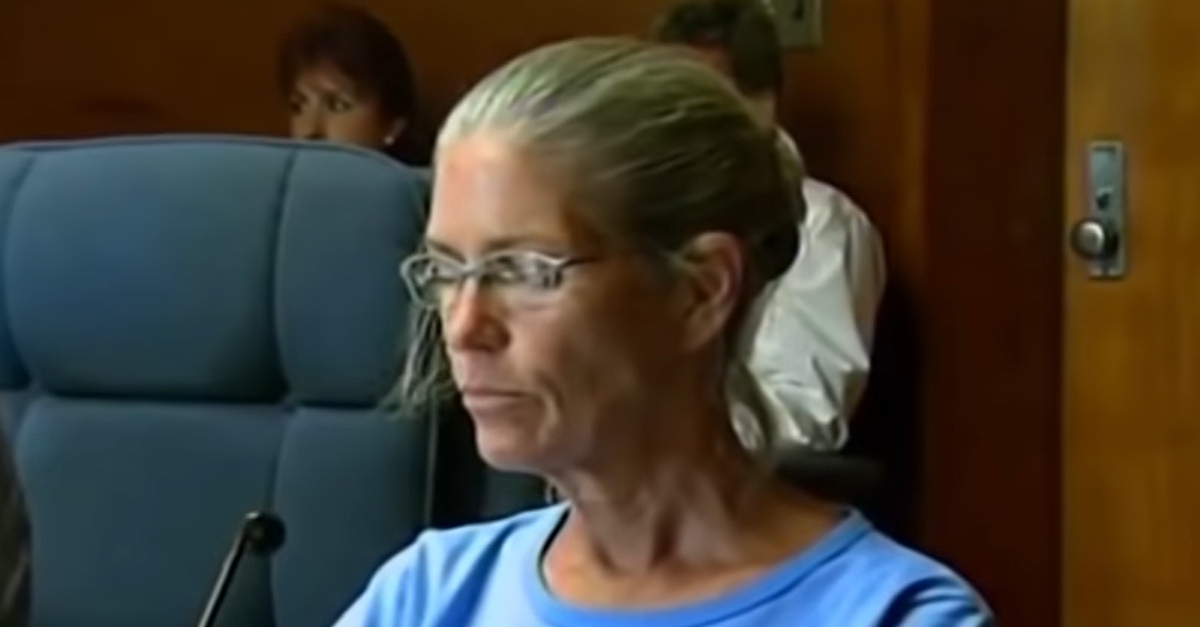
Leslie Van Houten, on the left, in a March 29, 1971, file photo in a Los Angeles lockup (AP Photo/File); pictured, on the right, in May 5, 2020 (California Department of Corrections and Rehabilitation via AP)
One of the Manson Family cult members who murdered dress shop owner Rosemary LaBianca and her supermarket executive husband Leno LaBianca in 1969 has been released from prison.
On Tuesday, Leslie Van Houten, 73, became a free woman, walking out of prison in Southern California after serving well over 50 years of concurrent sentences of seven years to life for the killings.
“She’s still trying to get used to the idea that this real,” her attorney, Nancy Tetreault, told The Associated Press.
The California Department of Corrections and Rehabilitation said Van Houten “was released to parole supervision,” the AP reported.
According to her attorney, she left the California Institution for Women, a Riverside County lockup due east of Los Angeles, during the early morning hours. She was then driven to transitional housing, Tetreault reportedly told the wire service.
Van Houten’s release caps over eight years of battling various Golden State governors who have vetoed her release on parole – after such a grant of leniency was first recommended by the California Parole Board in April 2016. Prior to that, the parole board had denied Van Houten’s requests for parole on 20 separate occasions.
The first governor to veto the convicted killer’s parole was Jerry Brown, a neoliberal fixture of California politics who served as governor during the late 1970s and early 1980s and then, after two failed runs for president, served as the mayor of Oakland before serving as governor again during almost the entirety of the 2010s.
“Both her role in these extraordinarily brutal crimes and her inability to explain her willing participation in such horrific violence cannot be overlooked and lead me to believe she remains an unacceptable risk to society if released,” Brown wrote in his first denial of Van Houten’s parole.

Leslie Van Houten during her first successful parole hearing in April 2016. (Screengrab via KPIX)
Read Related Also: Mom accused of medical child abuse, fundraising off false claims of daughter having rare diseases searched ‘how to fix Munchausen by proxy’: Sheriff
Various parole boards would recommend parole for the former Manson follower four more times. Each time, however, the state’s Democratic governors would vote against the aging woman’s release, despite the findings of successive parole boards that Van Houten had drastically changed since she was finally convicted and sentenced after three trials in 1971. Brown would veto her release once more; current Gov. Gavin Newsom would go on to veto her parole three times. And the courts upheld each of those vetoes.
Until one didn’t – just this past May.
In a 2-1 decision, the California Court of Appeal for the Second Appellate District, sitting in Los Angeles, found that Newsom’s penultimate veto of Van Houten’s parole was legally insufficient – effectively rendering his latest veto legally moot in the process.
At the time, Newsom issued a statement, saying: “Ms. Van Houten’s explanation of what allowed her to be vulnerable to Mr. Manson’s influence remains unsatisfying. She described herself at the time of her involvement in the Manson family as a ‘very weak person that took advantage of someone that wanted to take control of my life, and I handed it over.’”
Justice Helen Bendix’s opinion in the 2-1 decision, in which Justice Victoria Gerrard Chaney concurred, dismissed that line of reasoning as simply not enough under the law.
“Van Houten provided extensive explanation as to the causative factors leading to her involvement with Manson and commission of the murders, and the record does not support a conclusion that there are hidden factors for which Van Houten has failed to account,” Bendix wrote. “The Governor’s refusal to accept Van Houten’s explanation amounts to unsupported intuition.”
And, key to the majority’s finding, was the reflection and genuine change the convicted murderess had long ago established.
“The Governor’s finding of inconsistencies between Van Houten’s statements now and at the time of the murders fails to account for the decades of therapy, self-help programming, and reflection Van Houten has undergone in the past 50 years,” the court wrote. “The historical factors identified in the criminal risk assessment are the sort of immutable circumstances our Supreme Court has held cannot support a finding of current dangerousness when there is extensive evidence of rehabilitation and other strong indicators of parole suitability, all of which Van Houten has demonstrated.”
Have a tip we should know? [email protected]







